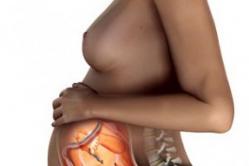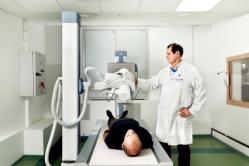Antipyretics for children are prescribed by a pediatrician. But there are emergency situations for fever when the child needs to be given medicine immediately. Then the parents take responsibility and use antipyretic drugs. What is allowed to give to infants? How can you bring down the temperature in older children? What medicines are the safest?
The word "chondrosis" is popularly called the disease "osteochondrosis", which affects the musculoskeletal system and affects connective tissues musculoskeletal system.
This disease is equally common in both men and women and begins to progress especially strongly in those people who have crossed the 50-year age threshold.
Chondrosis is both lumbar and thoracic and cervical spine.
Causes of the disease
Medical studies have established that the muscles of the neck are also involved in the formation of chondrosis. In people with this disease, the short muscle fibers that connect the processes of the vertebrae are under strong tension, and this leads to the appearance of muscle clamps.
The causes of the disease may be as follows:
- prolonged sitting in one place in an uncomfortable position or a sharp change in position over time sedentary work. In this case, the same muscle group is tense, which leads to the appearance of chondrosis. Therefore, it is not surprising that the disease has recently been found in young people who, due to their professional activities, are forced to sit at the computer in the office for days;
- uncomfortable position of the head during sleep. For example, if you sleep on a soft and uncomfortable pillow;
- hypothermia. If a person takes cold shower without pre-preparation, then muscle hypertonicity occurs;
- inactivity and unhealthy lifestyle. Here everything is clear without words;
- stress and strong emotional upheavals. Muscles can also tighten with constant stress that a person experiences and this is, as it were, a response from the muscles to constant mental trauma;
- age criterion. In older people, all muscles begin to age and atrophy, and osteochondrosis occurs at the slightest adverse factor.
There may be other causes of the disease, namely:
- disturbed metabolism in the body;
- vascular diseases and diabetes;
- overweight and high blood pressure.
Symptoms and stages of development of chondrosis
The main types of chondrosis that cause the most concern are cervical and lumbar.
Stages and signs of lumbar chondrosis
1 stage. The nucleus pulposus and intervertebral disc are damaged. All this is imperceptible to the patient and at the initial stage only minor pains in the back appear very rarely, so the person is in no hurry to go to the doctor, and it is at this stage that the process is reversible.
2 stage. The fibrous ring of the intervertebral disc begins to be damaged, a large load on the spine leads to cracks in the disc, and the nucleus falls out through the tears of the disc. At this stage, there are already more tangible pain in the back.
3 stage. A disc herniation is formed and the prolapsed nucleus presses on the tears, they increase in size. The degree of prolapse is very high and this can lead to muscle spasms and manifestations of infringement of the nerve roots. In addition to back pain, which becomes more intense, pain extends to the perineal region, it can hurt outside surface hips and the pain reaches the foot. Pain becomes stronger with coughing, physical exertion, or a change in body position.
Sensitivity decreases and goosebumps begin to crawl over the skin. muscle spasm restricts movement in the affected area.
4 stage. The spine undergoes degenerative changes. Adjacent vertebrae grow in width to unload the destroyed disc, thus forming osteophytes. At this stage, the mobility of the affected area is limited.
Stages and signs of cervical chondrosis
1 stage. There are initial violations of the vertebral discs. There are no symptoms.
2 stage. The main symptom is disc protrusion. The gaps between the vertebrae decrease, the fibrous ring is slowly destroyed, which causes pain in the neck, as the nerve endings are pinched.
3 stage. The fibrous ring is finally destroyed and a hernia is formed. Pain in the neck becomes more and more intense, in addition, the organs of the head are poorly supplied with blood and the blood circulation of the brain is disturbed. For this reason, a person complains of headaches, dizziness and even loss of consciousness.
The patient feels ringing in the ears, hears worse, vision and teeth also deteriorate, a person snores at night and his voice may change.
4 stage. This is the most severe stage of chondrosis. With any movement, the patient experiences unbearable pain, after a while he may get better, but this condition is deceptive, since bone growths begin to form, they connect the vertebrae and limit movement.
The patient may feel pain from the internal organs, vision may decrease and characteristic tinnitus appears. When the disease of the thoracic spine is affected, a person complains of respiratory failure and pain in the heart of a pulling nature. With lumbar chondrosis, the normal functioning of the stomach and the work of the genitourinary system may be disrupted.
Treatment methods for chondrosis
Medical treatment of any type of chondrosis is long and consists in eliminating pain syndrome, stopping developing dystrophic changes in the spine and restoring the normal function of the spinal canals.
Pain goes away in relatively a short time thanks to medicines, physiotherapy exercises and physiotherapy.
Treatment medicines allows you to stop severe attacks of pain, relieve the inflammatory process and restore the normal metabolic process in the body.
Spinal traction may be prescribed to relieve pain and restore the physical correct curves of the spine. Traction (stretching the spine) will increase the space between the vertebrae and create natural curves in the spine.
Manual therapy is useful for chondrosis, it will allow you to get rid of acute pain and correct posture. popular destination manual therapy is visceral therapy. It will establish the mobility of the vertebrae and improve blood circulation in the tissues affected by the disease.
Another treatment technique is reflexology. It is combined with drug treatment and will greatly increase the effectiveness of drugs. The pain disappears, the patient's sleep improves and the psyche is restored.
by the most modern method Treatment of chondrosis is considered shock wave therapy. It is based on the fact that the shock wave can cause changes in the tissues of the human body. Ultimately, the microcrystals of calcium salts are destroyed, and the areas of fibrosis formed in the affected tissue are also destroyed, so the blood flow becomes much stronger. Such therapy will help restore the structure of the affected joints, they become elastic and will be able to endure the former load.
Useful and massage, which relieves muscle tension improves blood circulation.
Physiotherapeutic methods for the treatment of chondrosis include laser treatment, ultrasound, low frequency currents, and much more. Through these procedures, the patient will get rid of pain And inflammatory process. Physical procedures are also useful during recovery after surgery. These healing procedures reduce the duration of treatment and increase the conservatism of general therapeutic measures.
Very rarely resort to surgical intervention, if the usual treatment was ineffective.
Folk recipes for chondrosis
1. Treatment with a rolling pin. It will help you get rid of the pain. You need to take the rolling pin in your right hand and begin to gently tap it on your right shoulder, shoulder blade and spine area. The same procedures are then performed with the left hand, tapping is carried out on the opposite side. The procedure can be done at least in the morning, even in the evening. You can lie on the floor and put a rolling pin under your back, and then try to ride on it.
2. Badyaga. Rubbing is made from it. One part badyagi powder should be mixed with 30 parts vegetable oil. Rub the affected area with the resulting mass, after which you need to cover it with compressor paper and wrap yourself in a warm scarf.
3. Madder roots. Take a teaspoon of madder roots, previously crushed, and pour into a glass cold water. Boil the roots for ten minutes in a steam bath, then cool and strain them. The decoction should be drunk twice a day in the amount of 100 g before meals. But keep in mind that from such a decoction, approximately three days after the start of treatment, the urine will be pink or even red. There is no need to be afraid of this, it is necessary.
4. Lilac. Pour lilac flowers into a half-liter jar to the very top. Then pour vodka into the lilac. Place the mixture to infuse in a dark place for three weeks, after which it must be filtered. Take 30 drops orally before meals three times a day. The general course of treatment is three months.
Prevention of chondrosis
The most important rule is the formation of correct posture. From the bed you need to get up by turning to one side, sleep on an orthopedic pillow and mattress. People prone to manifestations of chondrosis are not recommended to go to the bath.
Large weights should be carried not in bags, but in a backpack, and before you lift a heavy burden, you need to sit down. Disturbed metabolism very often provokes the appearance of chondrosis, so various vascular diseases and other ailments must be treated in a timely manner in order to prevent such a pathology.
It is very important to maintain a normal weight, monitor blood pressure and blood sugar levels. It is advisable to massage twice a year, especially in spring and autumn, during the period of exacerbation of all diseases.
And an active lifestyle and physical education will help prevent such an insidious disease as chondrosis.
http://posustavam.ru
Aloha my friends! Today our hero is an insidious and merciless villain named Chondrosis. Quietly and imperceptibly, he attacks the beautiful Spina and her son Spine, turning their lives into a real nightmare in the end.
He makes them suffer from pain and does not let them sleep. But when you read this story to the end, you will know how to treat spinal chondrosis.
What is spinal chondrosis?
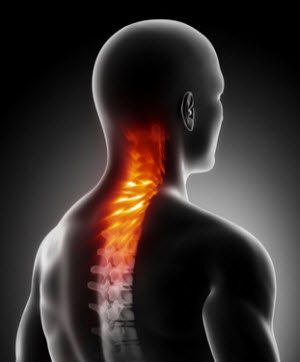 The main problem of almost any chondrosis is that a person does not complain about any symptoms for a long time. Therefore, when the discomfort has already appeared, it may be too late.
The main problem of almost any chondrosis is that a person does not complain about any symptoms for a long time. Therefore, when the discomfort has already appeared, it may be too late.
By and large, chondrosis is the 1st stage of osteochondrosis. Some sources say that chondrosis is just a simpler name for osteochondrosis, but there are still some differences.
During the stage, which is called chondrosis, degenerative-dystrophic processes are fixed only in the intervertebral disc. The surrounding tissues, both muscle and bone, are not yet involved in this process.
For many years, doctors believed that osteochondrosis is a consequence of age-related tissue degradation. Such a statement can be considered reliable, because 8 out of 10 people after 55 years of age will have signs of osteochondrosis.
However, not everyone will complain about the symptoms. In addition, in recent decades, the disease has become rapidly younger. And this suggests that age is not always the main reason.
Stages of development of osteochondrosis
To better understand the differences between chondrosis and osteochondrosis, the following classification can be given, which describes degenerative changes in the intervertebral disc.
- At the preclinical stage, there are practically no symptoms, only biochemical changes. The worst thing that the patient can describe is increased fatigue of the muscles of the back and neck compared to the previous period.
- In the second stage, changes in the nucleus pulposus become more pronounced. Necrotic changes and destruction are already recorded in it. Increased fatigue is felt more strongly, local pains begin.
- In the third stage, the fibrous ring is completely destroyed. You can see gaps and all sorts of cracks in it. The nucleus pulposus protrudes, and the adjacent vertebrae become more mobile.
- In the fourth stage, the intervertebral disc begins to be replaced by scar tissue. The pathological process involves not only the intervertebral disc, but also the tissues and structures surrounding it.
What causes the development of chondrosis?
Despite some mystery of this disease, there are a number of factors that can provoke such a pathology.
- Firstly, these are any diseases that are associated with vascular and endocrine disorders, as well as with improper metabolism. That is, we are talking about everything that interferes with the proper nutrition of the intervertebral discs.
- Secondly, hard physical work, which, one way or another, affects your spine.
- Thirdly, a static and non-physiological position when you work at a computer. It is especially bad if you spend a long time in this position.
- Fourthly, excess weight can adversely affect the health of the back.
- Fifth, chondrosis can be provoked by birth defects or post-traumatic complications.
- Sixthly, factors such as improper and unbalanced nutrition should be mentioned. stress and lack of proper physical activity.
Now that you know all the causes that influence the development of this disease, you can easily exclude many factors from your life in order to do prevention.
In order for chondrosis to begin, the so-called causal factors must also affect you. The more of them, the more likely to get complications.
- The dysmetabolic factor is usually associated with the compression of blood vessels, which cannot provide proper nutrition and blood supply to the intervertebral discs.
- The gravitational factor is characterized by a long-term stay in a non-physiological position. This position leads to displacement of the intervertebral discs.
- The dynamic factor correlates with the transfer of weights.
What happens to the spine during chondrosis?
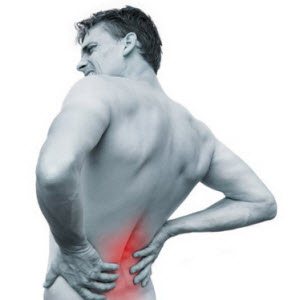 To understand what chondrosis is, you need to know and anatomical structure intervertebral disc and surrounding tissues.
To understand what chondrosis is, you need to know and anatomical structure intervertebral disc and surrounding tissues.
In fact, the intervertebral discs are shock-absorbing pads made of cartilage tissue. They are located between two adjacent vertebrae.
Such a small shock absorber helps our spine to be flexible and mobile, and at the same time strong enough.
The anatomy of the disc is very simple: there is a nucleus pulposus and a fibrous ring surrounding it.
The nucleus pulposus is a mass with a low density that resembles a gel. It consists, respectively, of water and proteoglycans (this is glucosamine, hyaluronic acid and chondroitin). Proteoglycans retain water and help the disc retain cushioning.
The fibrous ring that surrounds this structure is dense and durable. It does not allow the nucleus pulposus to move from its familiar place.
But all sorts of factors that I described above can affect the nucleus pulposus and deprive it of precious moisture. If at this moment the spine is also loaded beyond measure, then the unfortunate fibrous ring will not withstand and will crack.
Like any gel-like structure, the nucleus pulposus, which no longer holds anything, begins to blur and leaves the discs. A herniated disc or a so-called protrusion is formed.
The most common symptoms of chondrosis
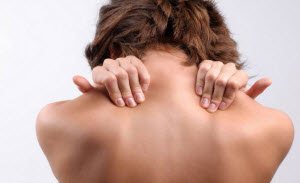 As mentioned above, chondrosis is the first stage of a more serious disease, so its symptoms are mild.
As mentioned above, chondrosis is the first stage of a more serious disease, so its symptoms are mild.
What should alert you?
Any back pain will be the surest sign of the pathological process that has begun.
Even if it is not a very strong discomfort, pay attention to it. Pain should especially disturb you after serious physical activity or at night before bed.
Since discs in different parts of the spine can suffer, pain can be localized both in the neck, in the thoracic part of it or in the lumbar region.
Sometimes this is a single lumbago, but he rarely worries a person, because the pain immediately disappears.
Unfortunately, these are almost all the symptoms that can be described in this case. More serious damage to the intervertebral discs also affects the nerve endings in this area. Therefore, they are accompanied by severe pain.
However, even such a symptom-poor condition can be easily tracked during an x-ray or MRI.
Chondrosis of the cervical spine
Nevertheless, the symptoms should be somewhat distinguished, depending on this zone, where the pathological process began. If you suspect cervical chondrosis, then there will be the most unpleasant symptoms.
The slightest deviation in this area immediately causes compression of the nerve roots and blood vessels, which are numerous in this small segment of the spine. Severe headaches, dizziness, increased blood pressure may be added to the above symptoms.
Chondrosis of the thoracic spine
This chondrosis is the most insidious. Why? Because he doesn't have any symptoms.
The thoracic part of the spine usually moves the least, so it is almost impossible to notice the restriction of mobility in this area.
Sometimes this area, as they say, can get completely stiff before you notice. serious problems Here.
Chondrosis of the lumbar
In this case, pain or backache will be given to the leg area. There may be discomfort in the hips, there is a slight burning sensation in the limbs.
Chondrosis of the sacrum
Here will be all the signs characteristic of problems with the lower back. But deviations in work may also join Bladder and intestines.
What methods of treatment are used to get rid of chondrosis?
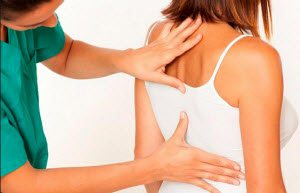 It is not possible to cure chondrosis. Really only slow down its progression.
It is not possible to cure chondrosis. Really only slow down its progression.
The doctor will always offer you two strategies. The first you will use during the period of exacerbation, and the second during remission.
It will help relieve pain and get rid of inflammation. You will be prescribed either pills or injections of certain drugs. Ointments or gels with various effects can also be used.
Usually, drug therapy is limited to painkillers, anti-inflammatory and warming drugs.
Such treatment leads the patient to the fact that he begins a period of remission.
At this stage, the specialist will prescribe you medications that activate metabolism and blood circulation, and help strengthen the affected back muscles.
In this period, all kinds of non-drug drugs are actively prescribed.
Based on your individual characteristics, the doctor may advise you to take a course of massage or actively engage in self-massage. In any case, it will improve your blood circulation and normalize metabolic processes.
From now on, special gymnastics will also enter your life. Every day you will need to perform simple exercises. They will help make your back stronger, and a strong muscular frame will prevent further displacement of the vertebrae.
There are many different resources that recommend various complexes of such physiotherapy exercises. I found a good, convenient and affordable course here:
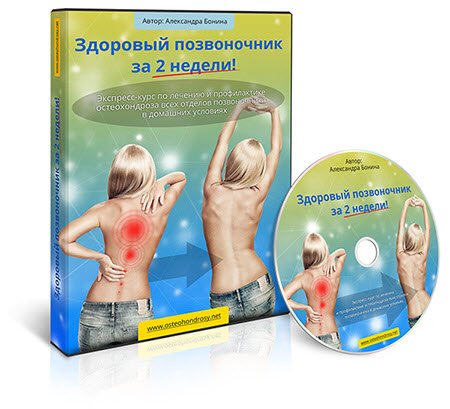
The half hour that you spend on your back guarantees you in the future healthy life and you will forget about your ailments for a long time. Nothing complicated is required from you, everything can be done at home.
Treatment of chondrosis with folk remedies
The most controversial point, because here you will be offered to cure your illness with a rolling pin or a bottle.
You can also use various infusions of celery, badyagi, lilac, bird cherry, barberry, acacia, dill, oak bark and other no less miraculous remedies. But be sure to discuss their use with your doctor.
Until we meet again on the air. Waiting for you next time to tell you something new!
http://life-another.ru
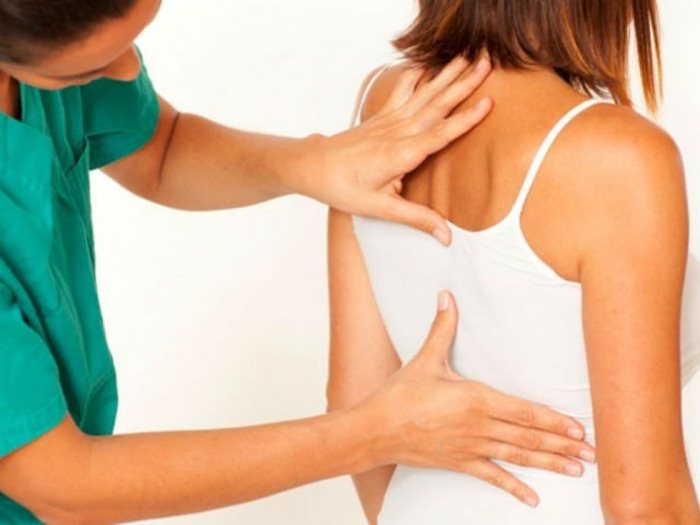
Many of us have ever heard the phrase from our grandparents: " Chondrosis tortured". Several years pass and the already matured generation complains to their heirs about the same ailment.
What is chondrosis. how to treat it and is it worth it? - let's try to figure it out.
What is chondrosis
Chondrosis is an ailment associated with the degeneration of cartilage tissue into bone. This usually occurs in the intervertebral discs and then we are talking about chondrosis of various parts of the spinal column: cervical, thoracic, lumbar. But this pathological process can affect other cartilage. For example, the cartilaginous part of the ribs. Then it is appropriate to talk about intercostal chondrosis.
But still, this problem in most cases affects the spinal column. Recall that the intervertebral disc consists of two parts:
- nucleus pulposus - a gel-like substance saturated with water and proteoglycans, and
- annulus fibrosus - a dense outer part that protects the inner.
A normal disc provides spinal mobility, flexibility and shock absorption. But with age, for certain reasons, changes occur that lead to chondrosis.
This pathology has several stages of development, as a result of which degenerative and dystrophic changes develop in the intervertebral discs.
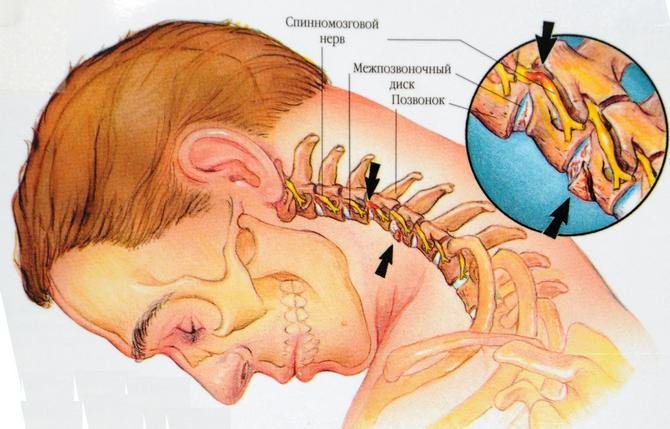
- Preclinical stage. Runs asymptomatic. Changes can only be determined at the level biochemical analyzes. As a rule, during this stage, there is a violation of nutrition and water exchange in the intervertebral disc, which does not have its own circulatory system and the entire process of providing water and nutrients takes place at the expense of surrounding tissues.
- Interstitial changes lead to degenerative processes at the morphological level. Due to insufficient nutrition and hydration, the discs cannot fully withstand the usual load. Fissures appear in the annulus fibrosus through which the nucleus pulposus is squeezed out.
There is a protrusion (protrusion) of the disc. The fibrous ring is not torn. There may be another form pathological changes when the outer ring remains tight and the inner contents of the disc shrink. Then they talk about the thinning of the disc.
- At the third stage the degree of damage to the fibrous ring increases. Chondrosis smoothly flows into osteochondrosis, since the pathology affects not only the intervertebral disc, but also the tissues surrounding it. The nucleus pulposus protrudes more and more beyond the disc. At this stage, doctors are already talking about intervertebral hernia. Compression occurs nerve endings and vessels.
- Degenerative processes increase and replace cartilage with bone. Due to this, osteophytes appear in the discs - bone growths that compensate for the destroyed cartilage.
Reasons for the development of chondrosis
Doctors have not yet thoroughly studied the reasons why a person develops and develops this pathology. After all, everyone knows what is the treatment for chondrosis. like any other disease, it begins with the establishment of factors that provoke pathogenesis.
If we talk about the degeneration of cartilage into bone tissue, then the reasons for this can be divided into a couple of types:
- related to the functioning of the spine itself and
- pathological changes in surrounding tissues and organs.
The first group includes mainly dynamic and static effects on the spine. So, pathology can cause:
. Especially dangerous is the transfer of weights with incorrect body inclinations, or a long stay in a position that differs from the natural, physiological position;- hypodynamia. The lack of movement, as well as too much load, is detrimental to the intervertebral discs. Therefore, if you have a sedentary job, constantly be distracted by small physical exercises. Change the position of the body and unload the spine;
- overweight. Excess fat not only interferes with movement, but also creates an additional load on the spine in general and on the intervertebral discs in particular;
- long static effect on the vertebrae. For example, if you sleep in an uncomfortable position. By the way, a soft bed is terrible enemy back health. Falling into a fluffy feather bed, the spine warms up and the vertebral discs become overly mobile, which is also fraught with the development of pathology;
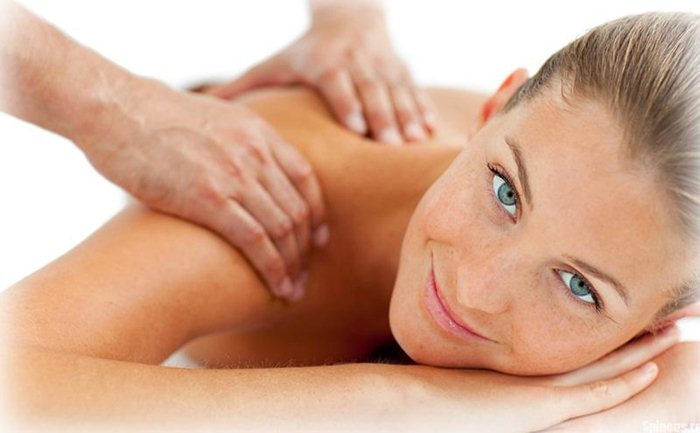
- injuries and disorders of the spinal column. Chondrosis develops faster in people suffering, for example, from scoliosis, flat feet, or other ailments of the skeletal system.
The second group of reasons for the development of chondrosis includes various pathological conditions of other systems and organs of the human body, which prevent normal nutrition intervertebral discs, and other factors:
- hypertension and other vascular diseases. It causes vasoconstriction, which means it worsens the supply of oxygen and nutrients;
- diseases endocrine system. in particular, diabetes mellitus;
- stressful conditions. They provoke a spasm of the back muscles, which again interferes with the normal metabolism in the discs;
- hypothermia. The mechanism of action is similar to that caused by stress: myospasm and malnutrition of the intervertebral discs;
- improper nutrition. It harms the whole body, including the spine.
Based on the above, chondrosis should be treated comprehensively, finding out its most likely cause. As a rule, during its development, a combination of unfavorable factors takes place. But even if a person leads an active lifestyle, knows how to lift weights correctly, is not nervous and does not suffer from metabolic diseases or others, with age he also falls into the risk group. After all, age-related changes lead to a violation of the metabolism of the intervertebral discs, and hence to the development of chondrosis.
Symptoms of chondrosis
They depend on the stage and localization of damage to the vertebrae. Foremost diagnostic symptom- Pain in the spine. They appear from the second stage of development of chondrosis, since the first one is completely asymptomatic. At first, the pain is single, such as a lumbago, and the patient, as a rule, does not give it the necessary attention.
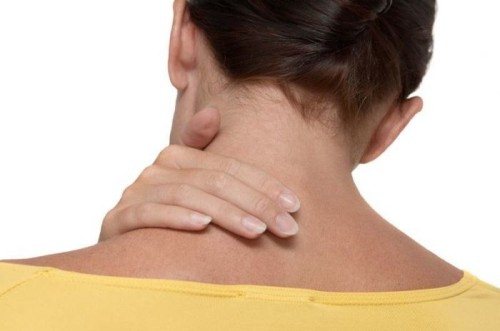
Pain occurs due to compression of nerve endings. Along with it, the presence of stiffness of movements, tension in the spine is noted. By the way, pain is dulled in the fourth stage of osteochondrosis. But they are not replaced by the limitation of the movement of the spine due to the replacement of cartilage with osteophytes.
Another characteristic symptom with chondrosis, radiating pains are, that is, pains projected onto internal organs. They depend on the place of development of the disease. Recall that chondrosis is cervical, thoracic and lumbar. The thoracic is much less common than the other two, due to the lower mobility of the vertebrae in this section of the spine.
If the patient is dealing with cervical chondrosis, then he will be tormented by headaches and migraines. If the disease is localized in the thoracic region, then the heart, liver and other internal organs may hurt. At the same time, the medicines used for such ailments do not help the patient. For example, the heart does not calm down after taking nitroglycerin. And all because the pain has a different origin, compared with the usual diseases of the internal organs.
How to treat chondrosis
Naturally, as with all other diseases, therapy is prescribed by a qualified doctor. There are many funds traditional medicine. But for their use, you need to consult a specialist. After all, wrong chondrosis treatment can lead to disability. And you need to be very careful, because we are talking about the spine and spinal cord.
How to treat chondrosis the doctor will determine based on the symptoms of the disease and various tests. Treatment methods can be:
Doctors resort to surgical intervention even when other therapy was completely ineffective.
Among other things, chondrosis treatment classified according to the form of the disease:
- therapy during an exacerbation of the disease. Its main task is to relieve pain. This is achieved with the help of tablets (painkillers and anti-inflammatory drugs) and injections;
- treatment in remission. Here, first of all, all efforts are aimed at improving blood circulation in the affected area of the spine and decompression of the nerves.
It should be noted that the treatment of this pathology, in addition to the efforts of doctors, directly depends on the forces applied by the patient. If in the acute phase of the disease the patient is prescribed complete rest and bed rest, then in the subacute phase, on the contrary, moderate physical activity, which helps strengthen the back muscles and restore spinal mobility.
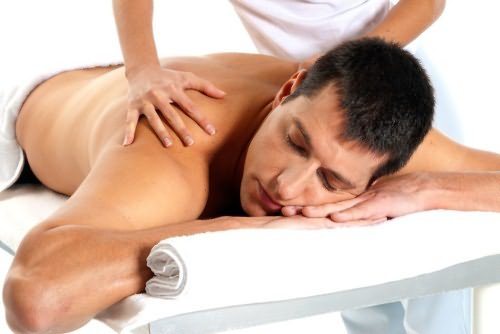
In addition to drugs that are used to relieve pain and improve blood and lymph flow, conservative methods include:
- LFK (medical and physical culture complex). It should be selected only by a specialist who will take into account the degree of damage to the intervertebral discs. Special equipment is used in hospitals for medical gymnastics. One of the components of exercise therapy is articular gymnastics. The main objective of this method conservative therapy there is a strengthening of the muscular corset of the spine and the development of correct posture, which, in turn, is a means of preventing osteochondrosis;
- physiotherapy. The range of her methods is quite wide. This is the use of ultrasound, and magnetic wave therapy, and low-frequency currents, and other devices. All of them are aimed primarily at restoring blood microcirculation in the affected area of the spine;
- massage and manual therapy. Their conceptions are similar to physiotherapeutic influences. In addition, massage relaxes the muscles and strengthens them;
- traction (stretching) of the spine. Very effective method used for treatment of chondrosis. Traction provides an increase in the intervertebral space, which in turn normalizes the natural curves of the spinal column;
- reflexology. It has a beneficial effect on the mental health of the patient, stress relief, which is an additional factor in recovery.
Chondrosis is an insidious disease that affects a person not in an instant, but develops over the years. Therefore, to get rid of it by magic, unfortunately, will not work. The recovery period is also quite extended in time. Therefore, you should be patient and work together with your doctor. After all, only with a coordinated impact, an integrated approach, the treatment of chondrosis will give its positive results.
Post navigation
Massage for osteochondrosis
Gouty arthritis - symptoms, diagnosis, treatment
http://o-lechenii-sustavov.ru
The word "chondrosis" is popularly called the disease "osteochondrosis", which affects the musculoskeletal system and affects the connective tissues of the musculoskeletal system.
This disease is equally common in both men and women and begins to progress especially strongly in those people who have crossed the 50-year age threshold.
Chondrosis is both lumbar and thoracic and cervical spine.
Causes of the disease
Medical studies have established that the muscles of the neck are also involved in the formation of chondrosis. In people with this disease, the short muscle fibers that connect the processes of the vertebrae are under strong tension, and this leads to the appearance of muscle clamps.
The causes of the disease may be as follows:
- prolonged sitting in one place in an uncomfortable position or a sharp change in posture during sedentary work. In this case, the same muscle group is tense, which leads to the appearance of chondrosis. Therefore, it is not surprising that the disease has recently been found in young people who, due to their professional activities, are forced to sit at the computer in the office for days;
- uncomfortable position of the head during sleep. For example, if you sleep on a soft and uncomfortable pillow;
- hypothermia. If a person takes a cold shower without pre-preparation, then muscle hypertonicity occurs;
- inactivity and unhealthy lifestyle. Here everything is clear without words;
- stress and strong emotional upheavals. Muscles can also tighten with constant stress that a person experiences and this is, as it were, a response from the muscles to constant mental trauma;
- age criterion. In older people, all muscles begin to age and atrophy, and osteochondrosis occurs at the slightest adverse factor.
There may be other causes of the disease, namely:
- disturbed metabolism in the body;
- vascular diseases and diabetes;
- overweight and high blood pressure.
Symptoms and stages of development of chondrosis
The main types of chondrosis that cause the most concern are cervical and lumbar.
Stages and signs of lumbar chondrosis
1st stage. The nucleus pulposus and intervertebral disc are damaged. All this is imperceptible to the patient and at the initial stage only minor pains in the back appear very rarely, so the person is in no hurry to go to the doctor, and it is at this stage that the process is reversible.
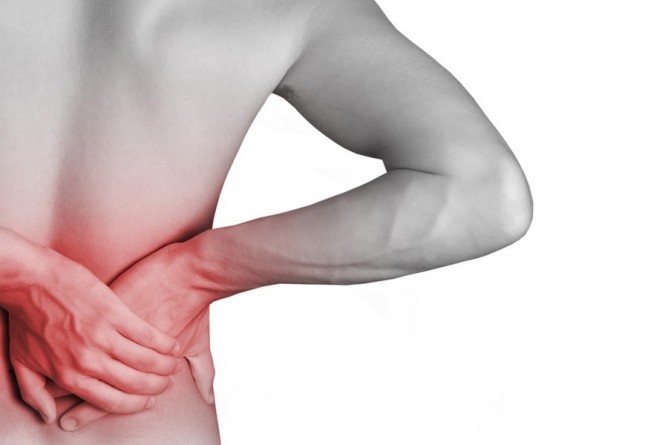
Stage 2. The fibrous ring of the intervertebral disc begins to be damaged, a large load on the spine leads to cracks in the disc, and the nucleus falls out through the tears of the disc. At this stage, there are already more tangible pain in the back.
3 stage. A disc herniation is formed and the prolapsed nucleus presses on the tears, they increase in size. The degree of prolapse is very high and this can lead to muscle spasms and manifestations of infringement of the nerve roots. In addition to back pain, which becomes more intense, pain extends to the perineum, the outer surface of the thigh may hurt and the pain reaches the foot. Pain becomes stronger with coughing, physical exertion, or a change in body position.
Sensitivity decreases and goosebumps begin to crawl over the skin. Muscle spasm restricts movement in the affected area.
4 stage. The spine undergoes degenerative changes. Adjacent vertebrae grow in width to unload the destroyed disc, thus forming osteophytes. At this stage, the mobility of the affected area is limited.
Stages and signs of cervical chondrosis
1st stage. There are initial violations of the vertebral discs. There are no symptoms.
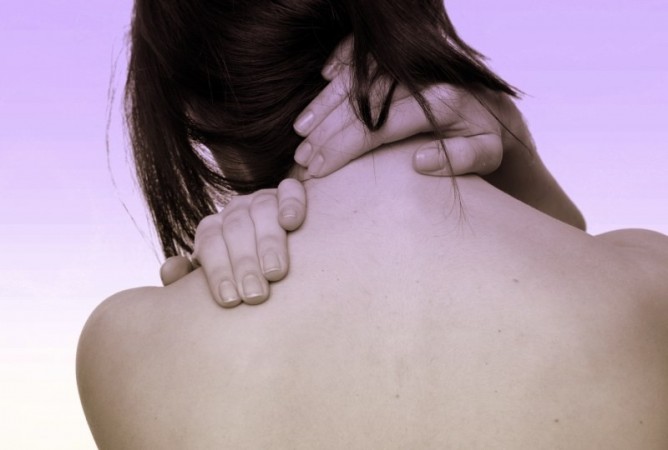
Stage 2. The main symptom is disc protrusion. The gaps between the vertebrae decrease, the fibrous ring is slowly destroyed, which causes pain in the neck, as the nerve endings are pinched.
3 stage. The fibrous ring is finally destroyed and a hernia is formed. Pain in the neck becomes more and more intense, in addition, the organs of the head are poorly supplied with blood and the blood circulation of the brain is disturbed. For this reason, a person complains of headaches, dizziness and even loss of consciousness.
The patient feels ringing in the ears, hears worse, vision and teeth also deteriorate, a person snores at night and his voice may change.
4 stage. This is the most severe stage of chondrosis. With any movement, the patient experiences unbearable pain, after a while he may feel better, but this condition is deceptive, since bone growths begin to form, they connect the vertebrae and limit movement.
The patient may feel pain from the internal organs, vision may decrease and characteristic tinnitus appears. When the disease of the thoracic spine is affected, a person complains of respiratory failure and pain in the heart of a pulling nature. With lumbar chondrosis, the normal functioning of the stomach and the work of the genitourinary system may be disrupted.
Treatment methods for chondrosis
medical treatment any type of chondrosis is long-term and consists in eliminating the pain syndrome, stopping developing dystrophic changes in the spine and restoring the normal function of the spinal canals.
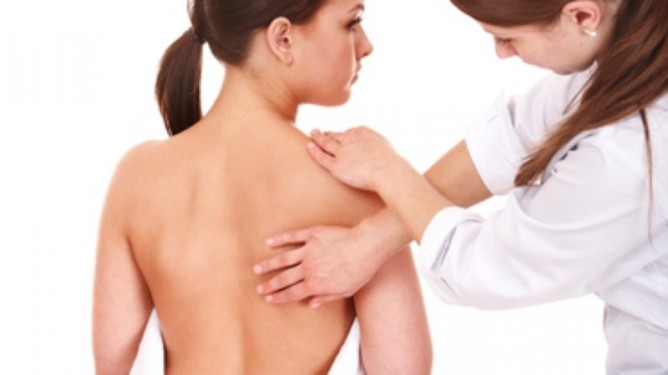
The pain goes away in a relatively short time thanks to medications, exercise therapy and physiotherapy.
Treatment with drugs allows you to stop severe attacks of pain, relieve the inflammatory process and restore the normal metabolic process in the body.
Spinal traction may be prescribed to relieve pain and restore the physical correct curves of the spine. Traction (stretching the spine) will increase the space between the vertebrae and create natural curves in the spine.
Manual therapy is useful for chondrosis, it will allow you to get rid of acute pain and correct your posture. A popular direction of manual therapy is visceral therapy. It will establish the mobility of the vertebrae and improve blood circulation in the tissues affected by the disease.
Another treatment technique is reflexology. It is combined with drug treatment and will greatly increase the effectiveness of drugs. The pain disappears, the patient's sleep improves and the psyche is restored.
The most modern method of treating chondrosis is shock wave therapy. It is based on the fact that the shock wave can cause changes in the tissues of the human body. Ultimately, the microcrystals of calcium salts are destroyed, and the areas of fibrosis formed in the affected tissue are also destroyed, so the blood flow becomes much stronger. Such therapy will help restore the structure of the affected joints, they become elastic and will be able to endure the former load.
Useful and massage, which relieves muscle tension, improves blood circulation.
Physiotherapeutic methods for the treatment of chondrosis include laser treatment, ultrasound, low frequency currents, and much more. Thanks to such procedures, the patient will get rid of pain and inflammation. Physical procedures are also useful during recovery after surgery. These therapeutic procedures reduce the duration of treatment and increase the conservatism of general therapeutic measures.
Very rarely resort to surgical intervention, if the usual treatment was ineffective.
Folk recipes for chondrosis
1. Rolling pin treatment. It will help you get rid of the pain. You need to take the rolling pin in your right hand and begin to gently tap it on your right shoulder, shoulder blade and spine area. The same procedures are then performed with the left hand, tapping is carried out on the opposite side. The procedure can be done at least in the morning, even in the evening. You can lie on the floor and put a rolling pin under your back, and then try to ride on it.
2. Badyaga. Rubbing is made from it. One part of badyaga powder should be mixed with 30 parts of vegetable oil. Rub the affected area with the resulting mass, after which you need to cover it with compressor paper and wrap yourself in a warm scarf.
3. Madder roots. Take a teaspoon of madder roots, previously crushed, and pour a glass of cold water. Boil the roots for ten minutes in a steam bath, then cool and strain them. The decoction should be drunk twice a day in the amount of 100 g before meals. But keep in mind that from such a decoction, approximately three days after the start of treatment, the urine will be pink or even red. There is no need to be afraid of this, it is necessary.
4. Lilac. Pour lilac flowers into a half-liter jar to the very top. Then pour vodka into the lilac. Place the mixture to infuse in a dark place for three weeks, after which it must be filtered. Take 30 drops orally before meals three times a day. The general course of treatment is three months.
The most important rule- the formation of correct posture. From the bed you need to get up by turning to one side, sleep on an orthopedic pillow and mattress. People prone to manifestations of chondrosis are not recommended to go to the bath.
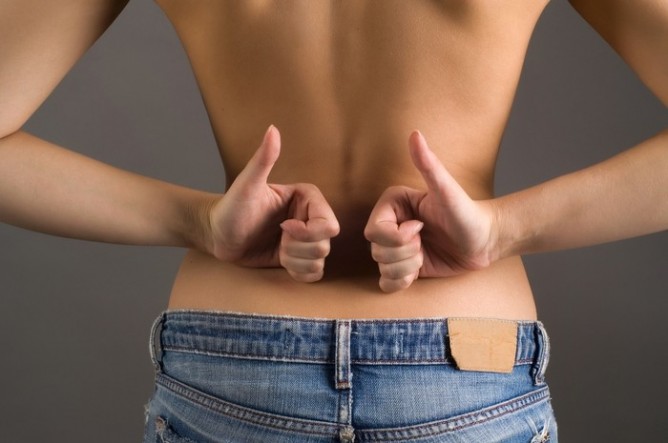
Large weights should be carried not in bags, but in a backpack, and before you lift a heavy burden, you need to sit down. Disturbed metabolism very often provokes the appearance of chondrosis, so various vascular diseases and other ailments must be treated in a timely manner in order to prevent such a pathology.
It is very important to maintain a normal weight, monitor blood pressure and blood sugar levels. It is advisable to massage twice a year, especially in spring and autumn, during the period of exacerbation of all diseases.
And an active lifestyle and physical education will help prevent such an insidious disease as chondrosis.
If you have back pain, you should see a doctor as soon as possible.
Chondrosis is a serious disease manifested by a degenerative-dystrophic process in the cartilage tissue that makes up the intervertebral discs. In 80% of cases, it occurs in men and women over 55 years of age, but it can also appear in people at a young age. The main danger of the disease lies in the fact that on initial stages it is almost asymptomatic. When the first signs of pathology appear, it can be quite difficult to eliminate it, and sometimes impossible.
What is the difference between chondrosis and osteochondrosis
This question can put a person far from medicine into a dead end. Many inexperienced patients believe that these are two different names for the same phenomenon. However, there is still a difference between the concepts.
Chondrosis is the initial stage in the development of osteochondrosis. This is the stage of the disease at which the pathological process captures only the vertebrae and does not spread to the surrounding tissues.
Under the influence various factors cartilage tissue becomes thinner and destroyed, replaced by fibrous tissue. Then there is ossification of the surrounding layers. There is pain, stiffness during movement and other unpleasant symptoms.
The disease can develop in any part of the spine: cervical, thoracic or lumbar. It can capture cartilage tissue in other areas. If the pathology appears on the cartilaginous areas of the ribs, it is called intercostal chondrosis.
Osteochondrosis is the next stage of the disease. It occurs when the destructive process captures not only discs, but also ligaments, vertebrae and cartilage. It is possible to compress the nerve roots, which leads to severe pain.
Chondrosis: symptoms and manifestations
Chondrosis is the initial stage of the development of a serious pathology, so its signs are often mild. Sometimes they are completely absent.
The main manifestations of the disease include:
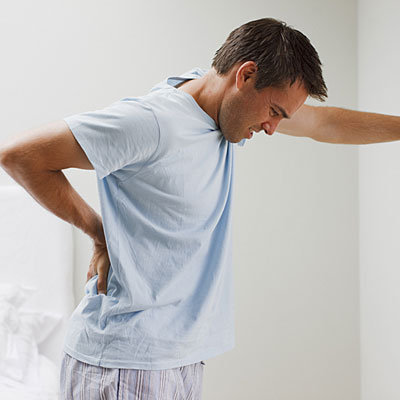
These are the main signs of chondrosis, to which other symptoms specific to a particular section of the spine can be added.
For the prevention and treatment of OSTEOCHONDROSIS, our regular reader uses the method of non-surgical treatment, which is gaining popularity, recommended by leading German and Israeli orthopedists. After carefully reviewing it, we decided to offer it to your attention.
Lack of treatment at the initial stage leads to the progression of the disease and its transition to the next phase - osteochondrosis. It differs from the previous compression of nerve endings and more severe pain. At this stage, the diagnosis of the disease is facilitated: it is possible to determine the development of chondrosis only with the help of magnetic resonance or computed tomography.
Signs of chondrosis of the cervical region
The pathological process in the cervical spine can manifest itself in different ways. In some cases, the patient experiences severe pain when turning the head, in other situations, the discomfort increases gradually. The following symptoms speak eloquently about the development of the problem:
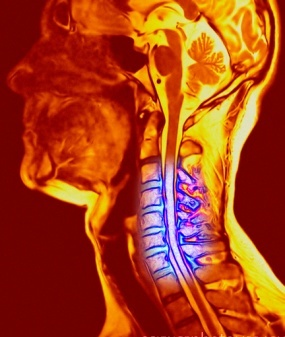
- the most dangerous kind of disease, because it can lead to compression of the artery that supplies blood to the brain, and compression of individual elements spinal cord.
At acute form disease, it is difficult for a person to even turn his head, because simple movements cause severe pain in the form of “lumbago”.
Thoracic chondrosis: main signs
This is the least common form of the disease. This is due to the low mobility of the thoracic spine. The discs are not subjected to heavy loads and are practically not injured, and therefore the pathological process rarely captures them and proceeds slowly.
In the early stages, there are practically no signs of the disease, and therefore the diagnosis is very difficult. The main manifestations of the disease include:
- discomfort in the back;
- pain in the chest area;
- spreading discomfort to the left arm, shoulder blade or neck.
Due to unexpressed symptoms, thoracic chondrosis is often confused with other diseases: heart disorders, etc. Three special signs allow to distinguish pathology:
- dependence of pain intensity on movements and physical activity;
- lack of connection between it and the use of nitroglycerin;
- localization of pain in the spine, noticeable when tapping.
Early diagnosis is very important, because the development of chondrosis in the sternum leads to a deterioration in blood circulation and the appearance of serious disorders in the functioning of the lungs and heart.
Signs of chondrosis of the lumbar
The key symptom is a feeling of stiffness and pain in the lower back. At the first stages of the development of the disease, they occur only in the presence of provoking factors: a long stay in one uncomfortable position, physical exertion, hypothermia, etc.
Acute chondrosis is characterized by severe pain that becomes more intense even when sneezing or coughing. Unpleasant sensations give to the buttocks, lower limbs and a cross. In severe forms of the disease, it is difficult for the patient to even get out of bed, bend down to pick up any object.
The progression of the disease can lead to numbness of the lower leg, thigh or buttocks. These symptoms are due to compression of nerve endings and the gradual transformation of the disease into osteochondrosis.
How does chondrosis manifest itself? lumbar spine? Symptoms, treatment, signs of the disease will be discussed below. You will also learn about how this disease is diagnosed, why it develops at all.
basic information
How to treat lumbar chondrosis, and what is this disease? You will receive answers to these questions in the materials of this article.
Chondrosis is a disease that is associated with degenerative-dystrophic destruction of cartilage tissue in the intervertebral discs located in various parts of the spine. This disease is the initial stage of osteochondrosis. The latter develops if the destructive processes spread and pass to nearby bones and tissues.
So what is lumbar chondrosis (symptoms, treatment are presented below)? The main difference between this disease and osteochondrosis is that such a pathology develops, but does not go beyond the cartilaginous tissues of the joints.
Features of the disease
What to do if you develop chondrosis of the lumbar spine? Symptoms, treatment of this disease should be identified and determined only by an experienced doctor. At the first sign of illness, you should immediately contact a specialist. This is due to the fact that with untimely treatment, dystrophic pathology can lead to thinning of the cartilage discs and, as a result, to the subsequent transformation of the hyaline structure into a fibrous one.
It should also be noted that the gradual development of the disease in question causes the formation of fibrous-type tissues, as well as ossification and calcification of the cartilaginous layers that are adjacent to the vertebrae. As a result of such a pathological process, quite serious damage to the intervertebral discs can occur. 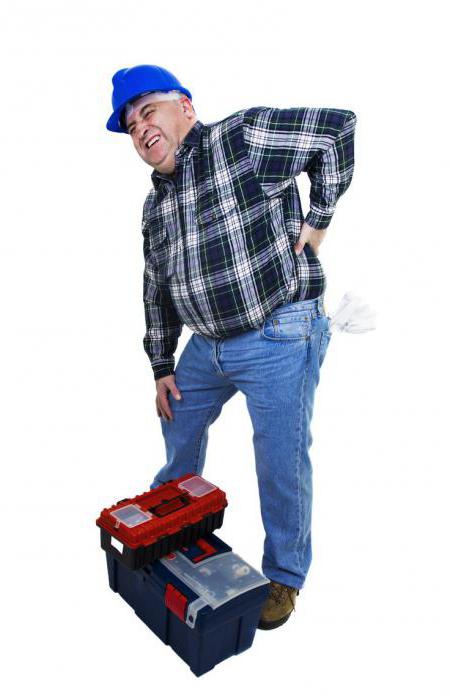
Causes of the disease
Why does this disease occur? What are its reasons? Chondrosis of the lumbar spine (symptoms, treatment of the disease are known to few) develops due to:

Clinic
How does chondrosis of the lumbar spine begin? Symptoms (treatment of the disease should be determined only by a doctor) of this disease do not bother patients immediately. The development of chondrosis begins with a decrease in the turgor of the fibrous ring and the nucleus pulposus, which subsequently leads to a protrusion of the disc forward and a change in its shape (makes it slightly oblique). Such a pathological process is determined only by X-ray.
According to experts, discs that have lost turgor are subject to overload, which leads to microtrauma, as well as accelerated nuclear atrophy. Thus, dense and loose fibrous tissues grow and gradually form a flattening of the cartilage. In this case, the height of the disk is significantly reduced. Also, the load on them increases, which leads to the gradual formation of arthrosis.
In the process of all dystrophic changes, a person begins to feel a strong pain syndrome in the lower back.
Chondrosis of the lumbar spine: symptoms
Treatment, diagnosis of the disease in question is carried out only by experienced specialists. After all, incorrect and untimely therapy of this disease can aggravate the already difficult situation of the patient. 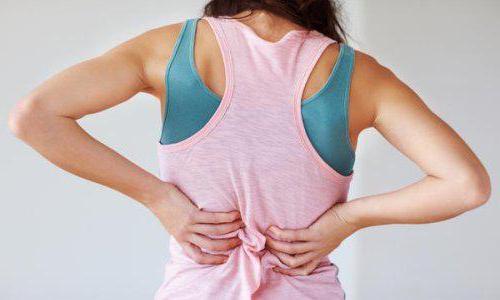
So how does chondrosis of the lumbar spine manifest itself? Symptoms (treatment of the disease is described below) of this disease depend on the stage of its development. Experts say that they can manifest themselves with varying degrees of severity.
At the very beginning of the disease, its symptoms appear only after a significant load (physical). At the same time, a person feels that they can go to the legs, buttocks and sacral region.
The transition of the disease to other stages almost always leads to the development of more pronounced sensations. As a rule, they are noted in the process of walking up the stairs, with a long stay in an uncomfortable position, sneezing, strong cough And so on.
Also, a person feels problems with the lower back in the morning, after getting out of bed. To bring their condition back to normal, patients need a little warm-up.
Other signs
How else is chondrosis of the lumbar spine manifested? Symptoms (treatment, signs of the disease are described in this article) in the form of pain occur when you try to bend or straighten the body. The patient also has numbness of the lower extremities.
In stages 3 and 4, the patient shows more severe symptoms. These include violations in the work of the genitourinary organs, protrusion, pathology of the vessels of the legs, hernia, abnormal bowel function.
The acute type of this disease is usually provoked by hypothermia or heavy lifting. At the same time, it is manifested by severe pain, which radiates to the buttock and sacral region. Such sensations are intensified in the process of fast walking or standing for a long time.
As for a chronic disease, it is characterized by prolonged aching pains in the lower back, which become more intense with bending and physical activity. 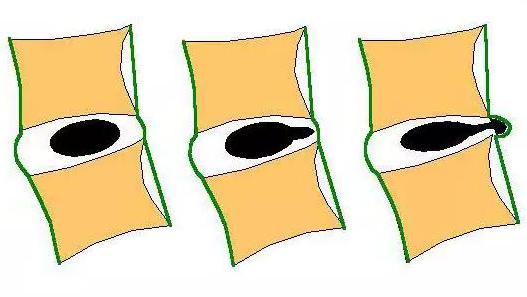
How is it diagnosed?
Chondrosis is diagnosed quite easily. First, doctors interview and examine the patient, and then refer him to general analyzes. Also, the patient is assigned an MRI and an x-ray of the lumbar region. These research methods are quite enough to reveal dystrophic changes.
Chondrosis of the lumbar spine: symptoms, treatment
The medicine for the treatment of the disease in question should be prescribed by a doctor only after a correct diagnosis has been made.
As mentioned above, with chondrosis, a person experiences quite severe lumbar pain. At the same time, they can give to the lower limbs and the pelvis. Therefore, first of all, the patient should be provided with complete rest (including bed rest).
To reduce the pain syndrome, the patient is prescribed anti-inflammatory drugs and potent analgesics, which are administered intramuscularly. Also, the patient may be recommended an ointment with a warming and analgesic effect. These creams include Ketonal, Indomethacin, Nurofen, Voltaren and Fastum. The main purpose of these ointments is to transfer the attack to the stage of remission. During this period, the entire treatment of the disease is aimed at normalizing blood supply and metabolism, suppressing pain, strengthening muscle and restoring damaged tissues. This may require the following techniques: 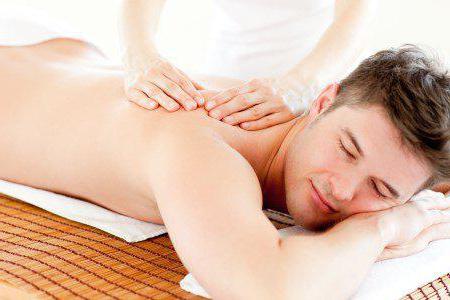
- Drug treatment (taking pain medications, using ointments, as well as NSAIDs, vitamin complexes, sedatives and antispasmodics).
- Physiotherapy, including electrophoresis, electromagnetic methods, laser therapy, vibration, magnetic wave methods, ultraviolet exposure.
- Massotherapy.
- Manual methods, including spine stretching, relaxation massage,
- Physiotherapy.

